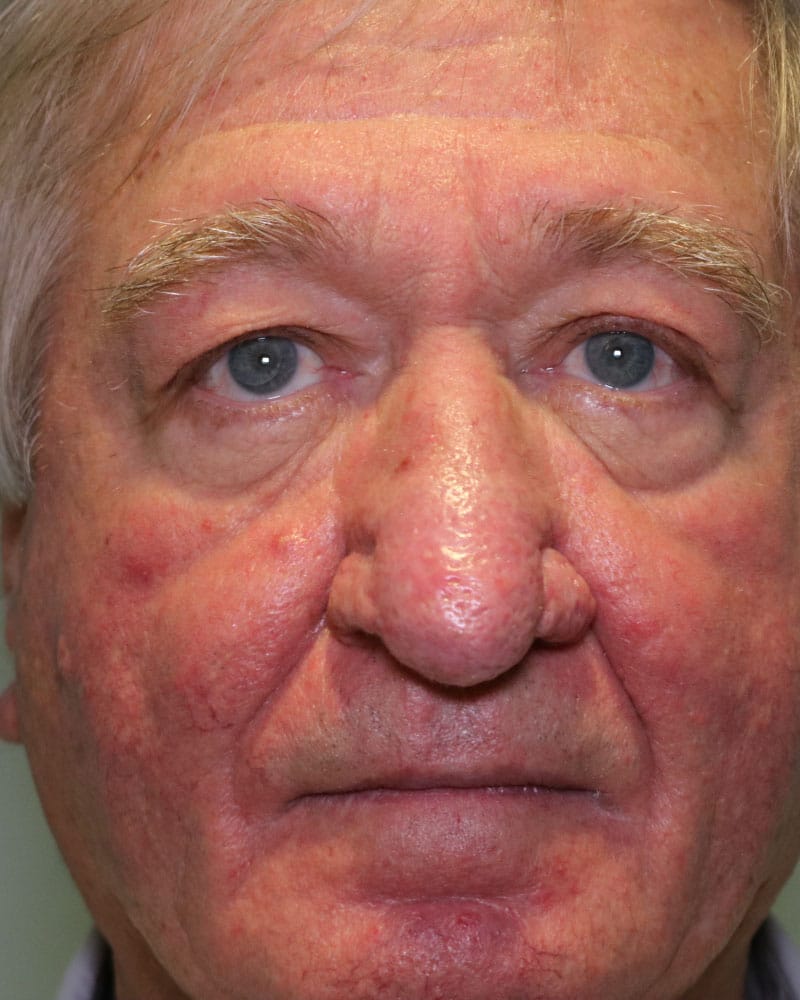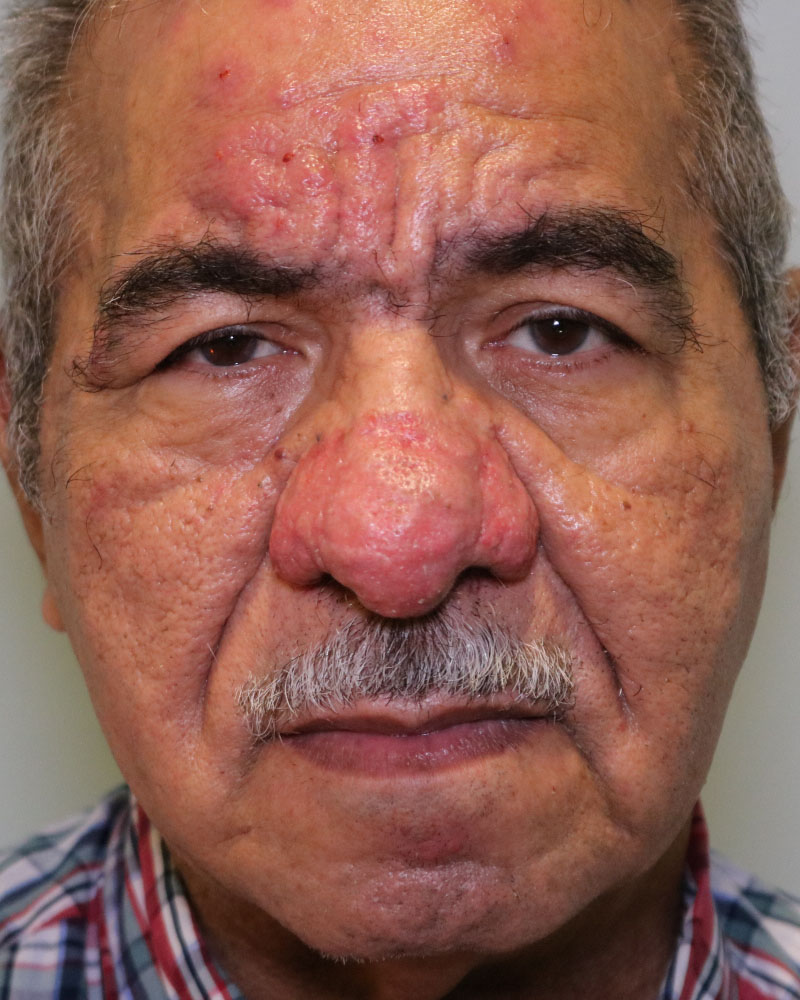
Before Rhinophyma

Before Rhinophyma

Before Rhinophyma

After Rhinophyma

After Rhinophyma

After Rhinophyma
What is Rhinophyma
Rhinophyma is a skin condition that affects the nose and is characterized by the thickening of the skin, resulting in a bulbous and enlarged appearance. It is a subtype of a condition called rosacea, which primarily affects the facial skin. Rhinophyma is more common in men, typically occurring in middle-aged or older individuals.
Cause of Rhinophyma
The exact cause of rhinophyma is still unknown, but it is believed to be a result of several factors, including genetics, environmental triggers, and the presence of certain bacteria on the skin. People with rosacea are more likely to develop rhinophyma, although not all individuals with rosacea will develop this condition.
Symptoms
The symptoms of rhinophyma usually start with a persistent redness and flushing of the nose. Over time, the skin on the nose becomes thicker, rougher, and oilier. The sebaceous glands in the nose become enlarged, leading to an overgrowth of tissue. This can cause the nose to appear swollen, lumpy, and disfigured. In severe cases, the condition can cause vision problems or difficulty breathing through the nose.
The impact of rhinophyma on a person’s quality of life can be significant. The visible physical changes can lead to social and psychological distress, as individuals may experience embarrassment, self-consciousness, and a decreased sense of self-esteem. It is essential to seek medical attention if symptoms occur, as early diagnosis and treatment can help manage the condition.
Combination Treatments
Treatment for rhinophyma typically involves a combination of medical therapies and surgical interventions. Topical creams or oral medications may be prescribed to reduce inflammation and control symptoms. Laser therapy and other surgical procedures, can help reshape and resurface the nose, improving its appearance.
It is important to note that rhinophyma is a chronic condition, and while treatment can help manage its symptoms, it cannot be completely cured. Regular follow-ups with Dr. Abramson and your dermatologist are necessary to monitor the progress and make adjustments to the treatment plan if needed.

